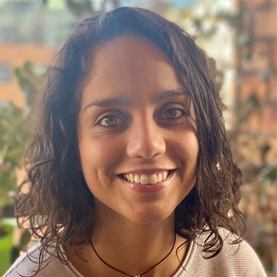
Mastering Time. To master time, you let go of your idea that effect follows cause, and you step into the stream of timelessness. In the West, we’ve been taught that time flows in one direction only, that the future is always ahead of us and the past is always behind us. This is monochronic time, which flows linearly, going at its petty pace from day to day. But time doesn’t just fly like an arrow; it also turns like a wheel. That’s why polychronic time, is considered sacred. Here the future seeps into the present to summon us and we can change events that have already occurred. The Laika believe that the chance occurrence of events, such as how two people happen to run into eah other serendipitously, is just as significant as their cause, or why those people were in the same place at the same time. Synchronicity allows for future causation and is more interested in the purpose and meaning of an event than in its cause.
Owning Your Projections. To own your projections, you must discover and acknowledge the parts of yourself that you’ve refused to look at. It turns out that everything you believe to be true about the people around you, or the situations you find yourself in, mirrors a story you hold about the way the universe works. When you understand this, you can take a long hard look at every difficult situation in your life and then change it within. The psychologist Carl Jung called these hidden parts the shadow. Our shadows are those parts of ourselves that make us feel that we’re not good enough, that we’re unwanted, or that we’re a failure and will never be happy; and projection is the mechanism through which we cast these undesirable qualities onto others. On the other hand, we also cast positive shadows. Marianne Williamson once said that it’s not our darkness that we fear the most, it’s our light meaning we tend to disown our own beauty and tremendous talent, keeping ourselves small and diminished.
No Mind. Practicing no-mind requires you to break free of your thoughts and get in touch with the sage within, who is beyond thoughts. You don’t have to spend hours upon hours in meditation to do this, although the practice can help anyone who wants to master it. When you become aware of how your mind foolishly jumps from thought to thought like a monkey, you can sit quietly, amused by its activity. The parade of thoughts will continue, but you won’t get caught up in it. There will only be the sage. You make the switch from identifying with the chatter to becoming the sage by asking questions such as “Who is hurt?” “Who is angry?” and “Who is late to the office?” What brings you home to the sage is always this: “Who is it that is asking the question?” The minute you ask yourself this, you break the trance and the mind dissolves. Only spirit remains, because Spirit is the sage.
Indigenous Alchemy. Indigenous alchemy is made up of four steps: identification, differentiation, integration, and transcendence. Identification. Identification is the quality of serpent; differentiation, of jaguar, integration, of hummingbird, and transcendence, of eagle. When a Laika wants to solve a problem, she practices indigenous alchemy and then works her way up to a higher level of perception, where solutions are readily available. We’re always in the process of identifying with some things, differentiation from or integration with others and transcending others. The way out of identification (into jaguar) is by owning the projection. The way out of differentiation (into hummingbird) is by turning it into a journey statement and asking yourself, “What do I have to do in order to move on?” The way beyond integration into transcendence (eagle0 is to see opportunity where you once saw only problems. Indigenous alchemy allows you to do your learning withing, rather tan through your children, parents, spouse, and co-workers.
What have you learned about the Way of the Sage?







